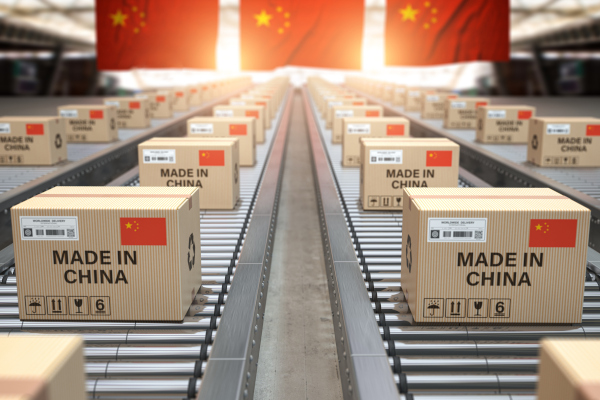The supply chain industry experienced a collective rude awakening in 2020 when a certain novel coronavirus rapidly spread across the globe and caused havoc on both the logistics and the strategy of global supply chains.
Since then, mitigating supply chain risk has become the predominant theme in manufacturing and supply chain-related strategy over the last few years. Of course, the pandemic hasn’t been the only disruptive event to cause the supply chain industry to reassess its practices.
Geopolitical events have thrown additional uncertainty into the mix. But despite the impulsive calls for sweeping changes to be made, the best strategy under current uncertainty might be to wait a few more years before formulating or implementing strategic supply chain changes. To understand why, it will be helpful to examine the geopolitical and economic contexts.
To start with, it’s important to acknowledge that many of the discussions that were had during the pandemic about mitigating supply chain risk were legitimate and sensible reactions to what was occurring at the time. To their credit, many companies and supply chain managers have listened to the advice and taken reasonable precautions such as near-shoring, diversifying their suppliers, dual sourcing, and investing in new technologies or product modifications that might make the product less supply chain dependent.
As disruptive as the pandemic was, however, there was another event—or rather a series of events—that also created uncertainty and anxiety. This was the U.S. administration’s levying of tariffs against China which escalated geopolitical tensions with that nation and had negative repercussions on many businesses in the U.S. This also upset the security and dependability of offshore supply chain relationships with other nations that saw the trend toward protectionist trade policies as a potential disruptive trend. The new reality is that supply chain managers need to be ready for a U.S. trade policy that lasts no more than four years and can change both in the U.S. and in the source country with little notice.
Of course, it’s not just the tariffs that have caused rising tensions with China. There is also the matter of the South China Sea, China’s increasingly aggressive stances towards Taiwan, controversy over human rights violations, and tensions over cybersecurity. For all these reasons, and the cumulative risks to security and stability they represent, there’s been increasing calls for pulling supply chains entirely out of China - or asking the Chinese source to relocate or route supply to another country.
The fact remains that China is still, and will continue to be, a giant in global manufacturing and trade. And, it is likely that its current domestic unemployment situation will result in governmental stimulus to support export growth. So, while it might initially seem risky, the pendulum could soon swing back as trade restrictions soften and companies in the U.S. return to cost rather than risk as the driving factor in supply chain decisions. Particularly for those U.S. firms with heavy investment in the development of relationships in China over the course of many years and decades, the idea of disentangling themselves from these relationships makes the wait-and-see strategy economically and strategically preferable.
The fact that pulling supply chain operations out of China isn’t a simple, quick, or easy task may actually end up being a blessing. This is because two key factors warrant a slow and cautious approach for the time being. One is geopolitical and the other is economical.
First, looking at the geopolitical factor, next year will be another U.S. election year. Right now, there is no way to know what administration will develop trade policy come January of 2025 or what actions that future administration will take on the geopolitical stage. Because of this, we are still in a highly uncertain period for supply chain management even if the worst of the pandemic is behind us. For those desiring some certainty before making globally strategic supply chain investments, the 2025-2026 timeframe may be much wiser than 2023-2024.
Next is the economic factor. Both geopolitical and pandemic-related concerns led to widespread calls for risk mitigation, and right now the prevailing mood is still one in which companies are leaning towards prioritizing risk reduction over economics. Because the memory of both the pandemic and tariffs against China are still fresh, the primary strategic objective for supply chain planning would likely be in favor of risk reduction over economics. But we see from history that sooner or later, economics wins out. If firms get overaggressive with their risk reduction strategies, what can happen is that their competitors take the global supply chain risk to gain cost advantages. Market shares change, and very soon the risk reduction strategy loses to economics-based strategy. Historically, we generally see is that the more time that passes after a crisis, the more people tend to forget the impact of those risks, become complacent and return to strategies popular before the crisis.
But wait-and-see does not mean wait-and-do-nothing. While major capital-intensive decisions might be postponed, none of this precludes taking the sensible actions of diversifying suppliers, scenario planning for backup sources, and investing in domestic or “friendlier” trade partners. Firms can continue to carry out such protective measures without an overly extreme focus on supply chain risk reduction to the neglect of economics. The bigger risk may actually be to give too much importance to risk.
About the author:
Dr. Richard Kilgore is an associate professor of management and business administration at Maryville University.
SC
MR


Latest Supply Chain News
Latest Podcast

 Explore
Explore
Procurement & Sourcing News
Latest Procurement & Sourcing Resources

Subscribe

Supply Chain Management Review delivers the best industry content.

Editors’ Picks




